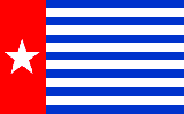International Crisis Group (ICG) released a new report on the violence in Papua on Friday, which calls into question the assumption, widely held by many journalists and analysts in Jakarta, that security forces have been behind shootings along the road from Timika to the Grasberg mine, the largest copper and gold mine in the world. The mine is owned and operated by Freeport-McMoran International, an American firm which was awarded its concession shortly after Indonesia occupied West Papua in 1963. The theory has been that the military and police have been fighting to control a long-running security racket around the mine. (I previously cited these assumptions in justifying my skepticism of statements by the National Police). ICG debunks much of the evidence surrounding this theory, concluding:
None of this means military involvement is impossible, but the evidence is either circumstantial or inaccurate. The unfortunate result of the shootings is an expanded military presence, but there is nothing to suggest that this was planned [by the security forces] from the outset.
And the executive summary suggests that:
Crisis Group believes there is a stronger case to be made for the involvement of one or more [separatist] TPN/OPM commands, because of statements claiming responsibility for some but not all of the attacks and various witness testimonies. But the possibility remains that multiple parties were involved, in what the Papuans refer to as “one plate, two spoons”.
(TPN is the military wing of the Free Papua Organization, or OPM, which has long waged an ineffectual, low-intensity conflict against the central government).
International Crisis Group has one of the most widely respected analytical staffs in Indonesia. Their painstaking on-the-ground research into conflicts across Indonesia, combined with careful analysis of the facts of each case gives their reports extraordinary credibility. In this case, their ability to send a researcher to Papua lends them credibility that foreign news organizations have not had in their insinuations at a military role, because paranoid elements of the Indonesian government restrict travel to the region by journalists and other researchers. If ICG is right about Papua, this is yet more evidence of the counterproductivity of the Indonesian government’s culture of paranoia when it comes to outsiders conducting research in this country. But for what it’s worth, this is also the second indication in as many weeks that the National Police might be more reformed and more trustworthy than previously believed.
ICG’s credibility also makes it all the more alarming that the rest of their report outlines the growth and increasingly violent trajectory of the West Papua National Committee (Komite Nasional Papua Barat, or KNPB). In an unpublished paper I wrote last year (while awaiting a long-delayed research permit from the Indonesian government– hence the “unpublished” bit), I argued that the Indonesian government’s failure to implement in good faith the 2001 Law on Special Autonomy for the Province of Papua had radicalized more and more young Papuans. I suggested that their radicalization could eventually lead this new, college-educated crowd to coordinated terrorist action against the central government and non-Papuan Indonesian citizens. The ICG report predicts as much, and backs it up with a riveting, detailed analysis of these developments. It is well worth your time to read the whole thing (PDF).
